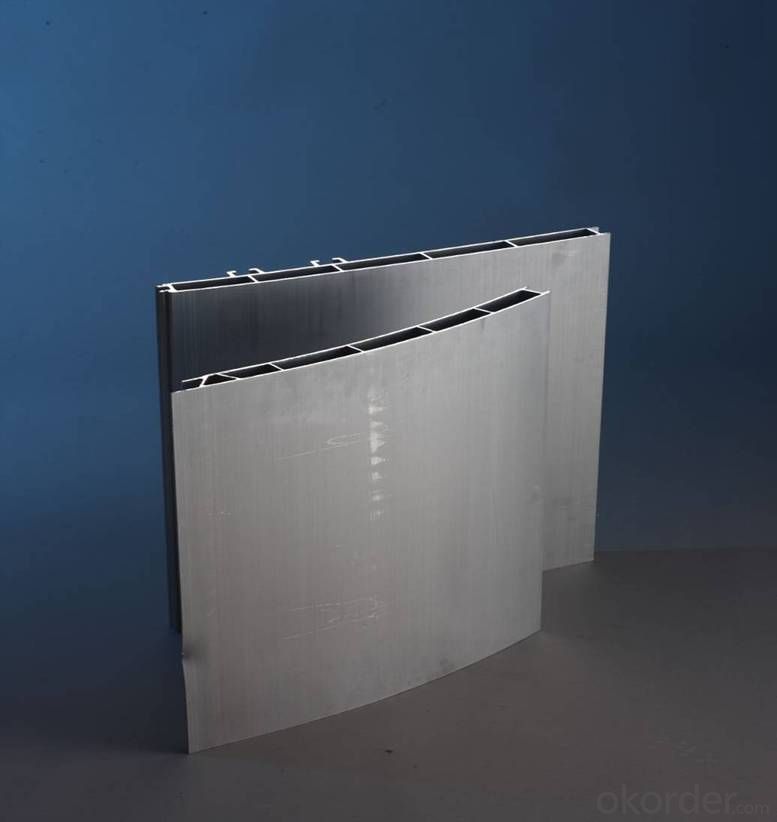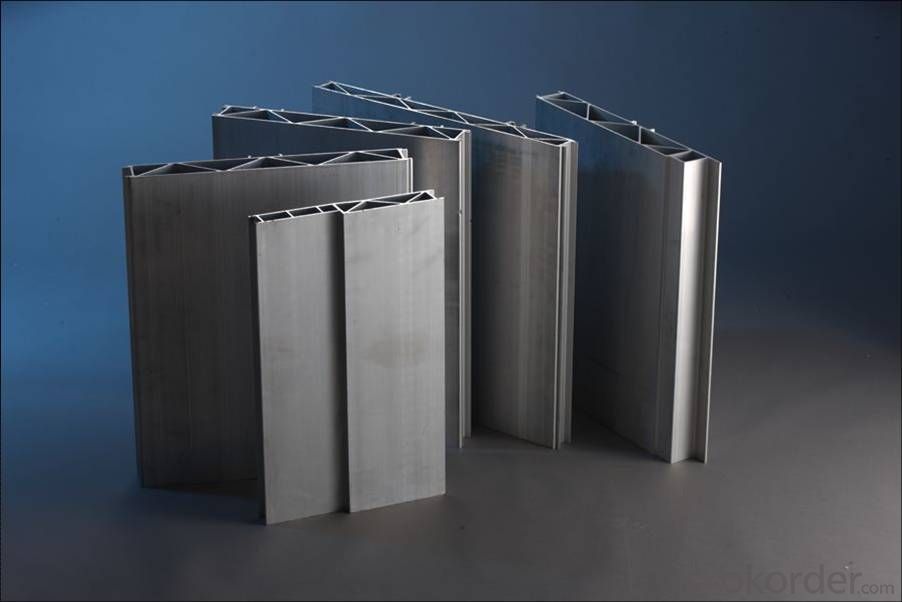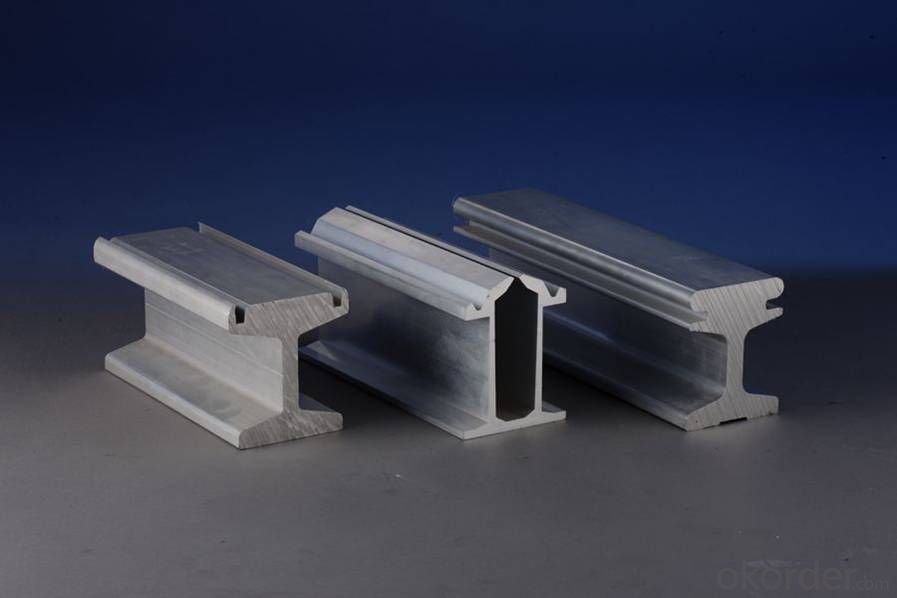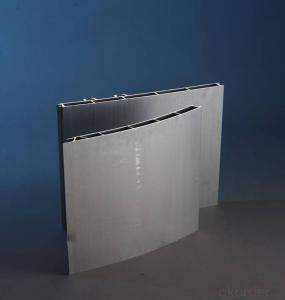6005A Aluminium Profiles for roof of subway carriage
- Loading Port:
- Shanghai
- Payment Terms:
- TT OR LC
- Min Order Qty:
- 5 m.t.
- Supply Capability:
- 1000 m.t./month
OKorder Service Pledge
OKorder Financial Service
You Might Also Like
Item specifice
1. Structure of 6005A Aluminium Profiles for roof of subway carriage Description
6005A Aluminium Profiles for roof of subway carriage is one semi-finished aluminium material. This coil can be rolled down to aluminium coil,sheet,circle ect. The alloy AA1050 is widly used in building, industry ect. Its weight is much lower than steel. So many customers choosed aluminium material instead of steel.
2. Specification of 6005A Aluminium Profiles for roof of subway carriage
6005A Aluminium Profiles for roof of subway carriage | |
Main Specification | |
Alloy | AA1xxx (AA1050, AA1060, AA1070, AA1100 etc.) |
AA3xxx (AA3003, AA3004, AA3005, AA3105 etc.) | |
AA5xxx, AA6XXX (AA5052,AA5083, AA5754, AA6061, AA6062 etc.) | |
AA8xxx(AA8011, AA8006 etc.) | |
Temper | H14,H16, H18, H22, H24, H26, H32,O/F, T4, T6, T651 |
Thickmess | 0.01mm-100mm |
Width | 30mm-1700mm |
Standard | GB/T 3880-2006/ASTM |
Special specification is available on customer's requirement | |
3. Application of 6005A Aluminium Profiles for roof of subway carriage
(1).Interior: wall cladding, ceilings, bathrooms, kitchens and balconies, shutters, doors...
(2).Exterior: wall cladding, facades, roofing, canopies, tunnels,column covers , renovations...
(3).Advertisement: display platforms, signboards, fascia, shop fronts...
4. Feature of 6005A Aluminium Profiles for roof of subway carriage
Surfact Quality :
Be free from Oil Stain, Dent, Inclusion, Scratches, Stain, Oxide Dicoloration, Breaks, Corrosion, Roll Marks, Dirt Streaks and other defect which will interfere with use,
Mechenical Property:
Chemical Composite and Mechanical Property
5. Certificate of 6005A Aluminium Profiles for roof of subway carriage
SGS and ROHS(if client request, paid by client), MTC(plant provided), Certificate of Origin(FORM A, FORM E, CO), Bureau Veritas and SGS (if client request, paid by client), CIQS certificate
6. Image of 6005A Aluminium Profiles for roof of subway carriage



7. Package and shipping of 6005A Aluminium Profiles for roof of subway carriage
First, plastic cloth with drying agent inside; Second, Pearl Wool ; Third, wooden cases with dry agent , fumigation wooden pallets, aluminum surface could cover blue PVC film
8. FAQ
1) What is the delivery time?
Depends on actual order, around 20 to 35 days
2) What is the QC system:
We have QC staff of 20 persons and advanced equipment, each production is with MTC traced from Aluminum ingot lot.
3) What market do you mainly sell to?
Australia, America, Asia, Middle East, Western Europe, Africa etc
- Q:Are aluminum profiles suitable for exhibition booths?
- Yes, aluminum profiles are suitable for exhibition booths. They are lightweight, durable, and easy to assemble and disassemble, making them ideal for creating versatile and portable booth structures. Additionally, aluminum profiles offer a sleek and modern aesthetic, allowing for customization and branding opportunities.
- Q:What are the dimensions of standard aluminum profiles?
- The dimensions of standard aluminum profiles vary depending on the specific application and industry standards. However, there are common dimensions that are widely used in various industries. Typically, the width of standard aluminum profiles can range from a few millimeters to several hundred millimeters. The height or depth of profiles can also vary, ranging from a few millimeters to several inches. In terms of length, standard aluminum profiles are often available in standard lengths of 6 meters or 20 feet. However, they can also be custom-cut to specific lengths as per the requirements of the project. Moreover, the thickness or wall thickness of aluminum profiles can vary depending on the intended use and load-bearing capacity. Generally, aluminum profiles have a thickness ranging from 0.5 millimeters to several millimeters. It is important to note that these dimensions are not fixed and may vary depending on the manufacturer, industry standards, and specific requirements of the project. Therefore, it is recommended to consult the manufacturer or supplier to determine the exact dimensions of standard aluminum profiles for a particular application.
- Q:Are aluminum profiles suitable for playground equipment?
- Yes, aluminum profiles are suitable for playground equipment. Aluminum is a lightweight and durable material that is commonly used in various industries, including playground equipment manufacturing. It is known for its strength and resistance to corrosion, making it suitable for outdoor applications. Aluminum profiles provide structural stability and can withstand the weight and forces exerted during play. Additionally, aluminum is non-toxic and does not rust, ensuring the safety and longevity of the playground equipment. The versatility of aluminum allows for the creation of various shapes and designs, providing endless possibilities for innovative and attractive playground structures. Overall, aluminum profiles are a suitable choice for playground equipment due to their strength, durability, and safety features.
- Q:Are aluminum profiles suitable for noise barriers?
- Yes, aluminum profiles are suitable for noise barriers. Aluminum is known for its durability, corrosion resistance, and lightweight properties, which make it an excellent material for noise barriers. Aluminum profiles can be designed to effectively reduce noise pollution by absorbing or reflecting sound waves. Additionally, aluminum's malleability allows for various design options, making it versatile for different noise barrier applications. It is also a sustainable material that is recyclable, making it an environmentally friendly choice. Overall, aluminum profiles are a suitable option for noise barriers due to their durability, effectiveness in reducing noise, and versatility in design.
- Q:What are the different shapes available for aluminum profile cross-sections?
- There are several different shapes available for aluminum profile cross-sections, depending on the specific application and requirements. Some common shapes include: 1. Square: This shape features equal sides and right angles, making it suitable for applications where stability and strength are important, such as structural framing. 2. Rectangular: Similar to square profiles, rectangular profiles have unequal sides and can be used in a wide range of applications, including enclosures, frames, and supports. 3. T-shaped: This shape consists of a central vertical section with a horizontal section extending from one side, resembling the letter "T." T-shaped profiles are often used for joining two components or for providing additional support to structures. 4. L-shaped: L-shaped profiles have a 90-degree angle and are commonly utilized as brackets, corner reinforcements, or frame components. 5. Round: Round aluminum profiles have a circular cross-section and are frequently employed in applications where a smooth, curved appearance is desired, such as handrails, furniture, or decorative elements. 6. I-beam: Resembling the letter "I," these profiles have a central vertical section (known as the web) and two horizontal sections (known as the flanges). I-beams are widely used in construction and structural engineering due to their high strength-to-weight ratio. 7. U-channel: U-channel profiles have a U-shaped cross-section and are often used as edge protectors, trim, or guides. They can also be utilized as tracks for sliding doors or as reinforcement beams. 8. Hexagonal: Hexagonal profiles have six sides and can be used in applications where increased strength and rigidity are required, such as machinery frames or support structures. These are just a few examples of the different shapes available for aluminum profile cross-sections. It is important to choose the most appropriate shape based on the specific requirements of the intended application to ensure optimal performance and functionality.
- Q:What are the design options for aluminum profiles?
- When it comes to aluminum profiles, there are numerous design options available, offering a wide range of applications and customization possibilities. Here are some commonly used design options for aluminum profiles: 1. Various Extrusion Shapes: Aluminum profiles can be extruded into different shapes, including square, rectangular, round, T-shaped, I-shaped, or custom profiles. This shape flexibility enables designers to create profiles that perfectly match their project requirements. 2. Diverse Surface Finishes: Aluminum profiles can be finished with various surface treatments to enhance their appearance and protect them from corrosion. Popular surface finishes include anodizing, powder coating, polishing, brushing, and laminating. These finishes offer a variety of colors, textures, and levels of glossiness to suit specific design preferences. 3. T-Slot Profiles: T-slot profiles are a type of aluminum extrusion with a T-shaped slot on one or more sides. These profiles are commonly used in constructing frameworks, machine guards, and other structures that require easy assembly and reconfiguration. The T-slot design facilitates convenient insertion and adjustment of connecting elements, such as bolts, nuts, and brackets. 4. Thermal Break Profiles: Thermal break profiles are designed with a thermal barrier inserted between the interior and exterior parts of the profile. This design minimizes the transfer of heat or cold between the two sides, making them suitable for applications where thermal insulation is crucial, such as windows, doors, and curtain walls. 5. Customization Options: Aluminum profiles can be further customized through additional machining processes, such as cutting, drilling, tapping, milling, or bending. These processes allow for the creation of unique shapes, hole patterns, or features that meet specific design requirements. 6. Integration Capability: Aluminum profiles can be designed to integrate with other components or systems, such as hinges, connectors, fasteners, or brackets. This integration capability provides flexibility in assembly and enables the creation of complex structures or modular systems. In summary, the design options for aluminum profiles are extensive, offering versatility, functionality, and aesthetic appeal. Designers have the freedom to choose from a wide range of shapes, finishes, and additional features to create aluminum profiles that precisely meet their project needs.
- Q:Can aluminum profiles be used in the construction of greenhouses?
- Yes, aluminum profiles can be used in the construction of greenhouses. Aluminum is a popular choice for greenhouse framing due to its durability, lightweight nature, and resistance to corrosion. It offers structural strength while allowing for maximum light transmission, which is essential for plant growth. Additionally, aluminum profiles are easy to assemble and maintain, making them an ideal material for constructing greenhouses.
- Q:Why should aluminum surface treatment process?
- The hard oxide film formed after the surface oxidation treatment prevents the internal aluminum from being oxidized and prolongs the service life of the aluminum profile.
- Q:What is the limitation of aluminum bending
- Because the aging hardness will increase, and then take the bend, one is not easy to bend, and the other out of the bend, the effect is not good. So generally speaking like hanging rail is the first bend reaging.
- Q:How do you attach accessories or components to aluminum profiles?
- There are several ways to attach accessories or components to aluminum profiles. One common method is to use T-slot nuts and bolts. T-slot nuts slide into the T-slot groove on the profile and can be positioned anywhere along the length. The bolts then secure the accessory or component to the nut, creating a strong and secure connection. Another option is to use brackets or mounting plates specifically designed for aluminum profiles. These brackets usually have pre-drilled holes that align with the T-slot grooves, allowing for easy attachment of accessories. They can be fastened to the profile using screws or bolts. Additionally, there are various specialized connectors available for specific applications. Examples include corner connectors, joining plates, and hinge connectors. These connectors provide easy and reliable ways to attach accessories or components to aluminum profiles without the need for additional drilling or machining. It is important to consider the weight and load-bearing requirements of the accessories or components when choosing the attachment method. Using appropriate fasteners and connectors ensures a secure attachment and prevents any potential hazards.
1. Manufacturer Overview |
|
|---|---|
| Location | |
| Year Established | |
| Annual Output Value | |
| Main Markets | |
| Company Certifications | |
2. Manufacturer Certificates |
|
|---|---|
| a) Certification Name | |
| Range | |
| Reference | |
| Validity Period | |
3. Manufacturer Capability |
|
|---|---|
| a)Trade Capacity | |
| Nearest Port | |
| Export Percentage | |
| No.of Employees in Trade Department | |
| Language Spoken: | |
| b)Factory Information | |
| Factory Size: | |
| No. of Production Lines | |
| Contract Manufacturing | |
| Product Price Range | |
Send your message to us
6005A Aluminium Profiles for roof of subway carriage
- Loading Port:
- Shanghai
- Payment Terms:
- TT OR LC
- Min Order Qty:
- 5 m.t.
- Supply Capability:
- 1000 m.t./month
OKorder Service Pledge
OKorder Financial Service
Similar products
New products
Hot products
Related keywords





























